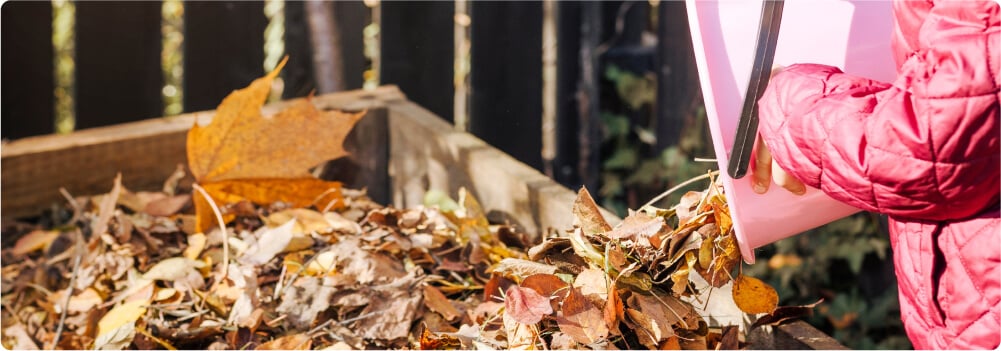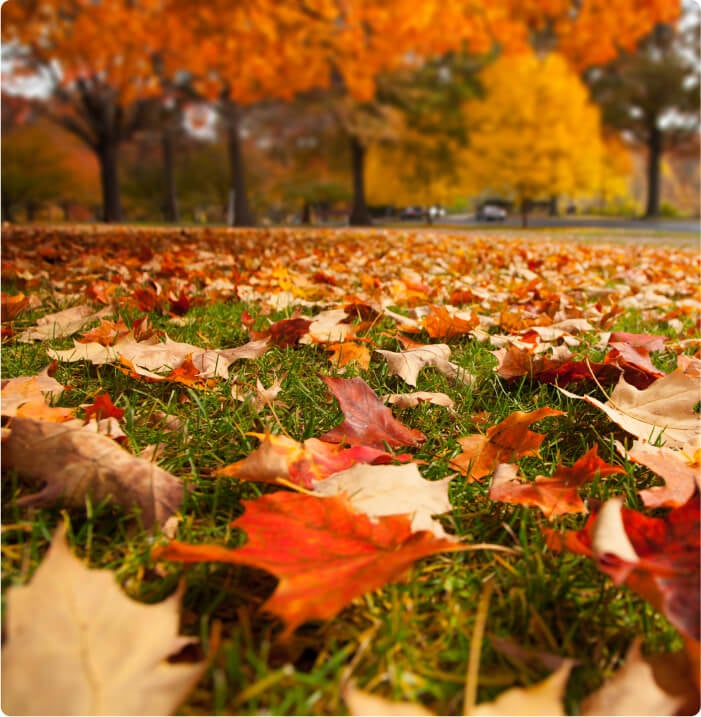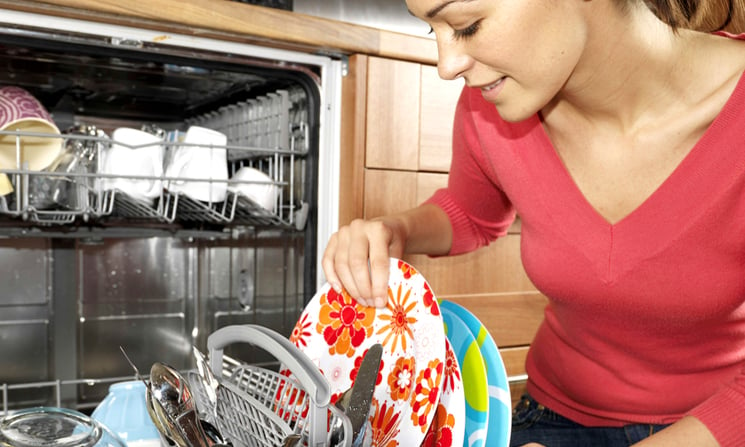The easiest ways to clean up leaves
Dealing with fall leaf cleanup can be a big job, but the right tools can make leaf pick-up much easier and faster. From a rake to more high-powered equipment, there are several effective options for cleaning up leaves that fit different preferences and yard sizes.
- Mulching Mower: As mentioned earlier, a mulching mower is one of the easiest ways to deal with leaves. It chops the leaves into tiny pieces that can be left on the lawn, eliminating the need to rake or bag them.
- Leaf Blower: Leaf blowers are a popular choice for quickly gathering leaves into piles. They’re especially useful if you have a large yard and want to move leaves to a central location for further use, like composting or mulching.
- Rake and Tarp: For those who prefer a traditional approach, using a rake along with a tarp can make the process more efficient. Simply rake the leaves onto the tarp and drag it to wherever you need to take the leaves — whether it’s to your compost bin or the curb for pick-up.
- Leaf Vacuum: A leaf vacuum can be useful for picking up leaves and shredding them, which is perfect if you want to compost or mulch. These vacuums reduce the volume of leaves significantly and make them easy to manage.
The best time to start leaf clean up is once most of the leaves have fallen but before the first heavy snowfall, which makes leaf removal more challenging. If you spread out the work over a few weeks and use efficient tools, leaf pick up doesn’t have to be overwhelming, and you can even make it a beneficial activity for your yard.
The benefits of leaving leaves in place over winter
Believe it or not, leaving some of those fall leaves in place can be one of the best things you can do for your garden — and for the environment. While the traditional approach to leaf clean up is to rake everything up and clear it out, allowing a portion of the leaves to stay in certain areas of your yard can provide surprising benefits:
- Nutrient Enrichment: As leaves break down over the winter, they return essential nutrients back into the soil, naturally enriching it for the next growing season.
- Soil Protection: Leaves create a protective layer that helps regulate soil temperature, retain moisture, and suppress weeds.
- Habitat for Wildlife: Those leaves can provide a cozy habitat for beneficial insects and small critters. Butterflies, ladybugs, and other insects often rely on fallen leaves for shelter during the cold months, helping to sustain local ecosystems.
Leaving leaves in flower beds, under shrubs, or in parts of your yard can save time and energy while supporting wildlife and soil health. If you’re not big on yard maintenance, or simply a true fall lover, skipping out on some of your leaf-picking-up duties can be an easy way to let nature do its work and give your garden a little boost.
Mulching leaves into grass or garden beds
What if you want those leaf nutrients, but aren’t too keen on unsightly piles of leaves littering your lawn? Mulching is another effective alternative to picking up leaves, turning a potential nuisance into a nutrient-rich asset. By using a mulching mower, you can chop those leaves into small pieces and let them fall right back onto your lawn or garden, providing a natural fertilizer that benefits your grass and soil health.
The small leaf pieces decompose more quickly, delivering organic matter that enriches the soil. This can improve soil structure, support microbial activity, and encourage lush growth for your lawn come spring. Mulching also helps protect garden beds from the harsh winter by insulating the soil.

Composting your leaves
Composting is another fantastic way to clean up leaves and put them to good use in your garden. Adding leaves to your compost pile helps create nutrient-rich, dark compost that can dramatically improve your soil quality. Fall leaves are high in carbon, which makes them a great "brown" material for compost. Mixing them with "green" materials, like grass clippings or vegetable scraps, helps create the perfect balance needed for efficient composting.
To compost your leaves effectively, it’s best to shred them first, as smaller pieces break down more quickly. If you don’t have a leaf shredder, simply running over them with a lawn mower will do the trick. When adding leaves to your compost pile, make sure to layer them with green materials, keeping the pile moist but not too wet. Turning the pile occasionally will speed up the decomposition process, and in a few months, you’ll have a pile of nutrient-rich compost that’s perfect for your garden beds.
Here’s how to do it:
- Shred your leaves to help them break down more quickly. If you don’t have a leaf shredder, simply running them over with a lawn mower will do the trick.
- Add the shredded leaves to your compost pile, layering them with green materials. Make sure to keep the pile moist, but not too wet.
- Turn the pile every so often to speed up decomposition.
In a few months, you’ll have a pile of nutrient-rich compost that’s perfect for your garden beds!
Creating leaf mold
Another simple but effective leaf clean up solution is turning them into leaf mold. Leaf mold is essentially decomposed leaves that create a dark, crumbly material similar to compost but with a slightly different purpose. Unlike compost, which is nutrient-rich, leaf mold is a fantastic soil conditioner. It helps improve soil structure, enhances moisture retention, and encourages beneficial microbial activity.
Making leaf mold requires nothing more than time and a little patience. Gather your leaves into a pile or place them in a large bin or trash bag with a few small holes for air. Then, let nature take its course.
Over the next six to twelve months, the leaves will break down and transform into a crumbly, moisture-retentive material you can add to your garden beds or use as a top dressing for your soil. Leaf mold is especially valuable for gardens with sandy or compacted soils, as it helps improve the soil's ability to retain water and nutrients.





